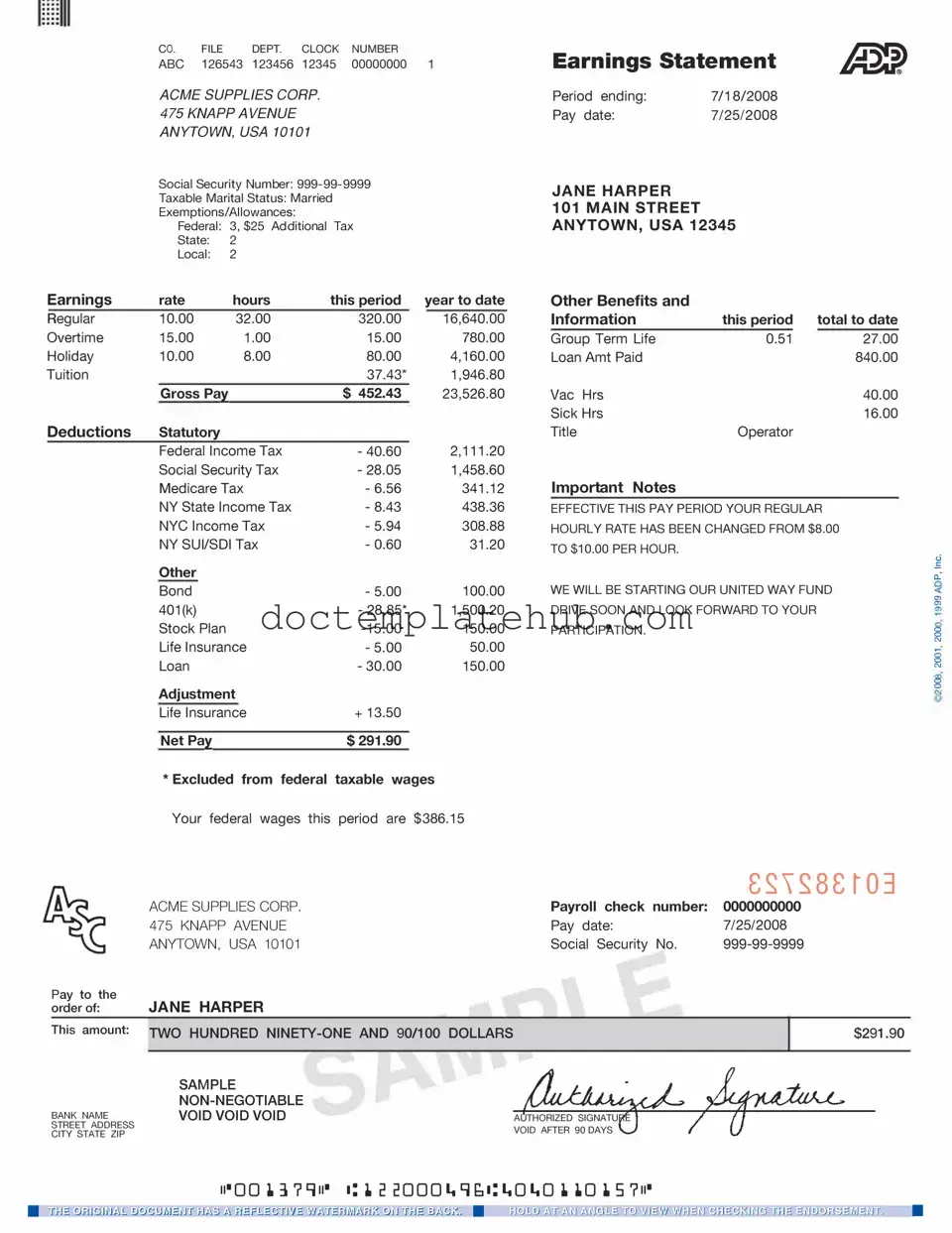The W-2 form is a key document for employees in the United States. It summarizes an employee's annual earnings and the taxes withheld from their paychecks throughout the year. Like the ADP Pay Stub, the W-2 provides crucial financial information, but it is issued at the end of the year rather than per pay period. Both documents serve to inform employees about their earnings and tax liabilities, making them essential for personal financial planning and tax preparation.
The pay statement, often issued by employers, is another document similar to the ADP Pay Stub. It details an employee's earnings for a specific pay period, including hours worked, gross pay, deductions, and net pay. While the ADP Pay Stub is a specific format provided by ADP, the pay statement serves the same purpose of breaking down compensation, allowing employees to track their earnings and deductions effectively.
The 1099 form is used for independent contractors and freelancers. It reports income received outside of traditional employment. Similar to the ADP Pay Stub, it provides a breakdown of earnings, but it does not include tax withholdings. Both documents are essential for understanding income, but the 1099 is geared toward those who are not on a payroll system, highlighting the differences in employment status.
The direct deposit receipt serves as a confirmation of funds transferred to an employee's bank account. This document shares similarities with the ADP Pay Stub, as both confirm payment. However, the direct deposit receipt typically does not provide a detailed breakdown of hours worked or deductions. Instead, it focuses solely on the transaction, making it a simpler but related document in the payroll process.
The paycheck is another comparable document. It is a physical or digital representation of an employee's earnings for a specific pay period. Like the ADP Pay Stub, it includes details about gross pay, deductions, and net pay. However, the paycheck is a method of payment, while the ADP Pay Stub is a detailed record that provides insights into the earnings breakdown.
The payroll summary report is typically generated by an employer's payroll system. It consolidates payroll information for multiple employees over a given period. This document is similar to the ADP Pay Stub in that it provides financial details, but it encompasses a broader scope, summarizing data for all employees rather than focusing on an individual’s earnings.
The benefits statement outlines the benefits an employee receives, such as health insurance, retirement contributions, and other perks. While it does not directly relate to pay, it is similar to the ADP Pay Stub in that both documents provide important financial information that impacts an employee's overall compensation package. Understanding benefits is crucial for employees when evaluating their total earnings and job satisfaction.
